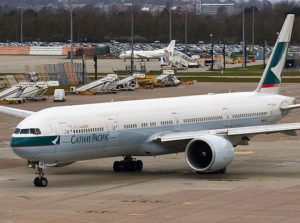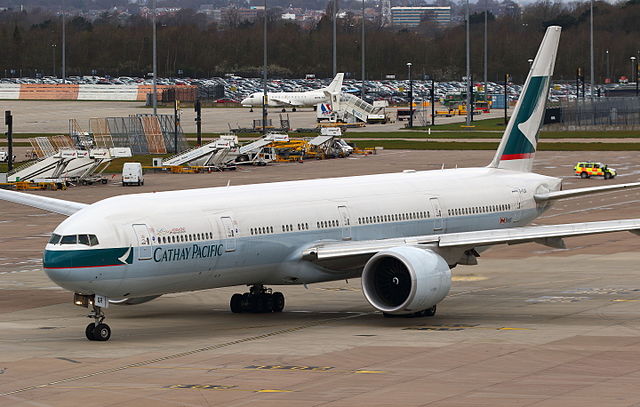 Hong Kong’s main carrier Cathay Pacific reported a loss of HKD575 million (US$74 million) for 2016 compared to a profit of HKD6 billion in 2015, the company’s worst financial results since 2008 as strong competition and rising costs affected its performance.
Hong Kong’s main carrier Cathay Pacific reported a loss of HKD575 million (US$74 million) for 2016 compared to a profit of HKD6 billion in 2015, the company’s worst financial results since 2008 as strong competition and rising costs affected its performance.
“The operating environment for the group’s core airline business was difficult in 2016, with a number of factors adversely affecting their performance. Intense and increasing competition with other airlines was the most important,” it said in an official release.
Asia’s biggest international airline noted how other airlines have significantly increased capacity, how China has added more direct flights to international destinations, and how low-cost carriers have been putting up increased competition.
Overcapacity in the market was a particular competitive problem for its cargo business, said the company.
Cargo revenue in 2016 was HKD20.063 billion, a decrease of 13.2% compared to the previous year. The cargo capacity of Cathay Pacific and Cathay Dragon increased by 0.6%, and the load factor increased by 0.2 percentage points, to 64.4%.
Tonnage carried increased by 3.1%. The market was very weak in the first quarter, but tonnage recovered from the second quarter, becoming seasonally strong in the fourth quarter.
As for yield, it fell by 16.3% to HKD1.59, reflecting strong competition, overcapacity, and the suspension of Hong Kong fuel surcharges.
Demand on European routes was weak, while demand on transpacific routes grew slightly in the second half of the year. Freighter services to Portland and Brisbane West Wellcamp were introduced.
“We managed freighter capacity in line with demand and carried a higher proportion of cargo in the bellies of our passenger aircraft,” said the statement.
The cargo market got off to a good start in 2017, but overcapacity is expected to persist.
The group’s passenger revenue in 2016 was HKD66.926 billion, a decrease of 8.4% from 2015. Capacity increased by 2.4%, reflecting the introduction of new routes and increased frequencies on other routes. The load factor decreased by 1.2 percentage points, to 84.5%.
Yield, which was under intense pressure throughout the year, fell by 9.2% to HKD54.1 cents, reflecting overcapacity in the market, a decline in premium class demand, and weak foreign currencies.
In response to weak revenues, the group has conducted a critical review of its business. In the short term, Cathay Pacific is implementing measures designed to improve revenues and reduce costs. The longer-term strategy is designed to improve performance over a three-year period, said the company.
Cathay Pacific chairman John Slosar said, “We are starting on a three-year program of corporate transformation with the intention of achieving returns above the cost of capital. The goal is to become a more agile and competitive organization in order to take advantage of changing market trends and customer preferences.”
For this year, Slosar predicts the operating environment in 2017 to remain challenging. “Strong competition from other airlines and the adverse effect of the strength of the Hong Kong dollar are expected to continue to put pressure on yield.”
Still, he said, the company expects business to grow in the long term despite the challenges it faces, banking on strong air traffic to, from, and within the Asia-Pacific region.
“We intend to benefit from this growth by increasing our passenger capacity by 4-5% per annum, at least until the third runway at Hong Kong International Airport is open. We will continue to introduce new destinations and to increase frequencies on our most popular routes. We are buying new and more fuel efficient aircraft. This will increase productivity and reduce costs.”
To cut costs, Slosar said they are working on operational changes intended to improve the reliability of their schedules so as to reduce the costs of disruption, use its assets more efficiently, and improve on-time performance.
“Our organization will become leaner. This will improve productivity and reduce costs and will also enable us to make decisions more quickly. Our aim is to reduce our unit costs excluding fuel over the next three years.”
In November 2016, Dragonair was rebranded as Cathay Dragon to align the brands of the two airlines. The first aircraft featuring the Cathay Dragon livery went into service in April 2016.
Photo: Russell Lee





